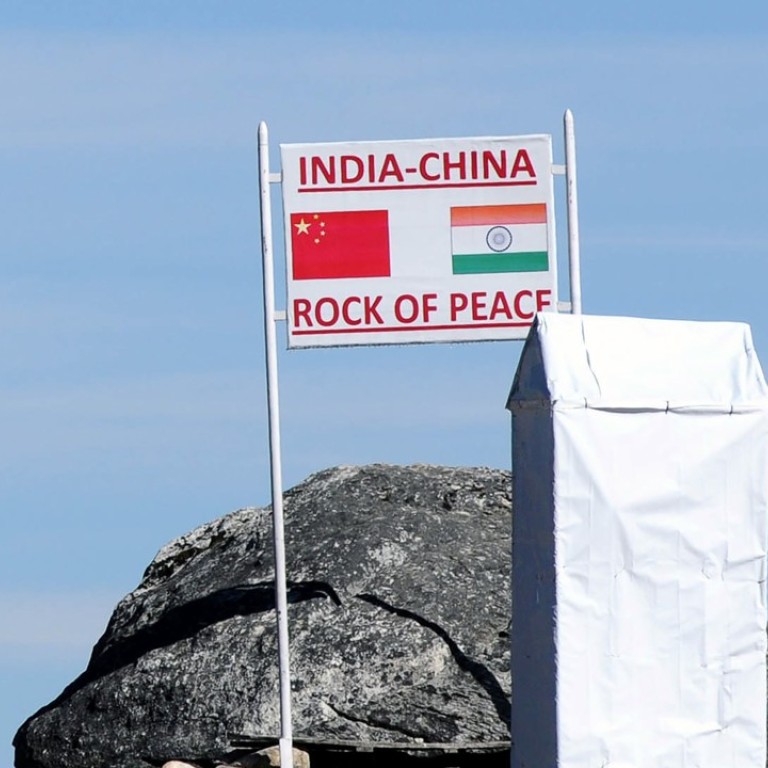
Update | India withdraws troops from disputed border zone, China says
Beijing, New Delhi issue differing reports of how ‘disengagement’ was agreed ahead of BRICS meeting this weekend
China said India had pulled its troops from the Chinese side of a disputed Himalayan border area on Monday afternoon, after a months-long stand-off.
Earlier in the day, India’s foreign ministry said it had agreed with China to an “expeditious disengagement” of troops from the Doklam plateau, an area close to the borders of China, India and Bhutan.
The announcements come ahead of a meeting of BRICS countries – Brazil, Russia, India, China and South Africa – in China this weekend. While Indian Prime Minister Narendra Modi is expected to attend, neither New Delhi nor Beijing has confirmed he will do so.
But each side differs on the details of the “disengagement”. Beijing said Indian troops had pulled back by early afternoon. Indian media reports said the “disengagement” would not be completed on Monday.
“In recent weeks, India and China have maintained diplomatic communication in respect of the incident at Doklam,” India’s Ministry of External Affairs said.
“On this basis, expeditious disengagement of border personnel at the face-off site at Doklam has been agreed to and is ongoing.”
The Chinese foreign ministry said Indian military personnel had pulled out of the Chinese side by 2.30pm on Monday.
“I am pleased to confirm that trespassing Indian personnel have all pulled back to the Indian side of the boundary,” foreign ministry spokeswoman Hua Chunying said.
When asked why she had mentioned only the withdrawal of Indian soldiers, Hua said: “The situation at the site has changed, and China will adjust and deploy according to the current situation.”
She added: “Chinese troops continue to patrol on the Chinese side of the boundary” and China would continue to “exercise its sovereign rights and defend territorial sovereignty in accordance with the historical demarcation agreement”.
Indian media reports said both Indian and Chinese troops were slowly being withdrawn from the disputed zone.
India’s NDTV reported that soldiers from both sides had started pulling out, but the process of removing them would not be completed on Monday.
In an earlier position paper, China said that at the peak of the crisis, up to 400 Indian soldiers and two bulldozers were engaged in the confrontation.
Despite the announcements, neither Beijing nor New Delhi mentioned if China had agreed to halt its construction of a road near the disputed border, the project that triggered the dispute.
Sun Shihai, an expert on South Asia at the Chinese Academy of Social Sciences, said: “There was deliberate ambiguity in the two foreign ministries’ statements. And each side’s media will write the narrative to suit the feelings of their audiences.”
“We don’t know the details. It’s not appropriate to say which side has made the bigger compromise, or who is the winner or loser.”
Rajeev Ranjan Chaturvedy, a research associate at the Institute of South Asian Studies at the National University of Singapore, said officials from both sides had worked hard to defuse the tensions.
“The diplomatic channels were open throughout,” Chaturvedy said. “Withdrawing troops will ease some tension and will provide room for both leaders at the BRICS [summit].”
James Char, an associate research fellow with the China Programme at the S. Rajaratnam School of International Studies in Singapore, agreed.
“This is a face-saving measure for China and India, especially given that Xi and Modi are expected to meet in Xiamen,” he said.
The border row started in June when India sent troops to stop China building a road in the Doklam area, a remote, uninhabited territory claimed by both China and Bhutan.
India said it sent in troops because Chinese military activity there was a threat to the security of its own northeast region.
But China said India had no role to play in the area and insisted it withdraw unilaterally or face the prospect of an escalation. Chinese state media had warned India of a fate worse than its crushing defeat in the war in 1962.
Li Li, a South Asian affairs expert from the China Institutes of Contemporary International Relations in Beijing, said the troop withdrawal would ease tensions for a while, but would not resolve the fundamental dispute the neighbours have over territory.
“Would it [a conflict] happen again if Beijing tried to build a road there sometime in the future?” she said. “India and China need to learn how to manage crises and prevent stand-offs from recurring.”
Char said he thought that although the root of the problem would remain, the risk of a serious conflict was very low as both China and India “clearly prioritise their national development over an area of mountainous terrain”.
“We can’t discount a similar stand-off happening in the Doklam region in the future, but I believe it won’t be soon,” he said.
“Both sides can be expected to pause their activities in the near to medium term.”



